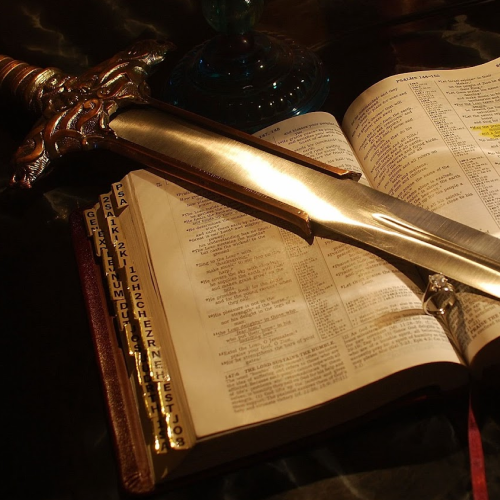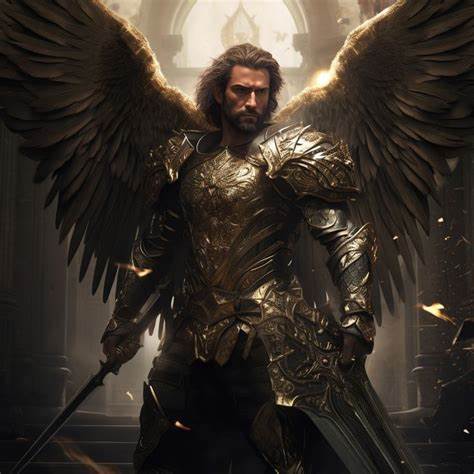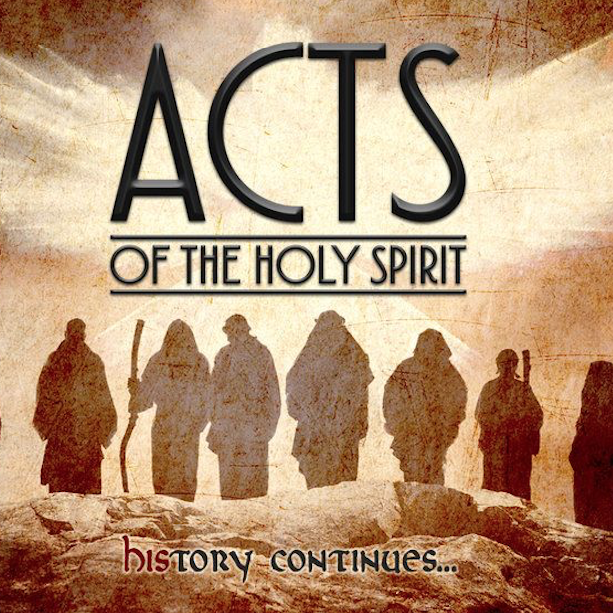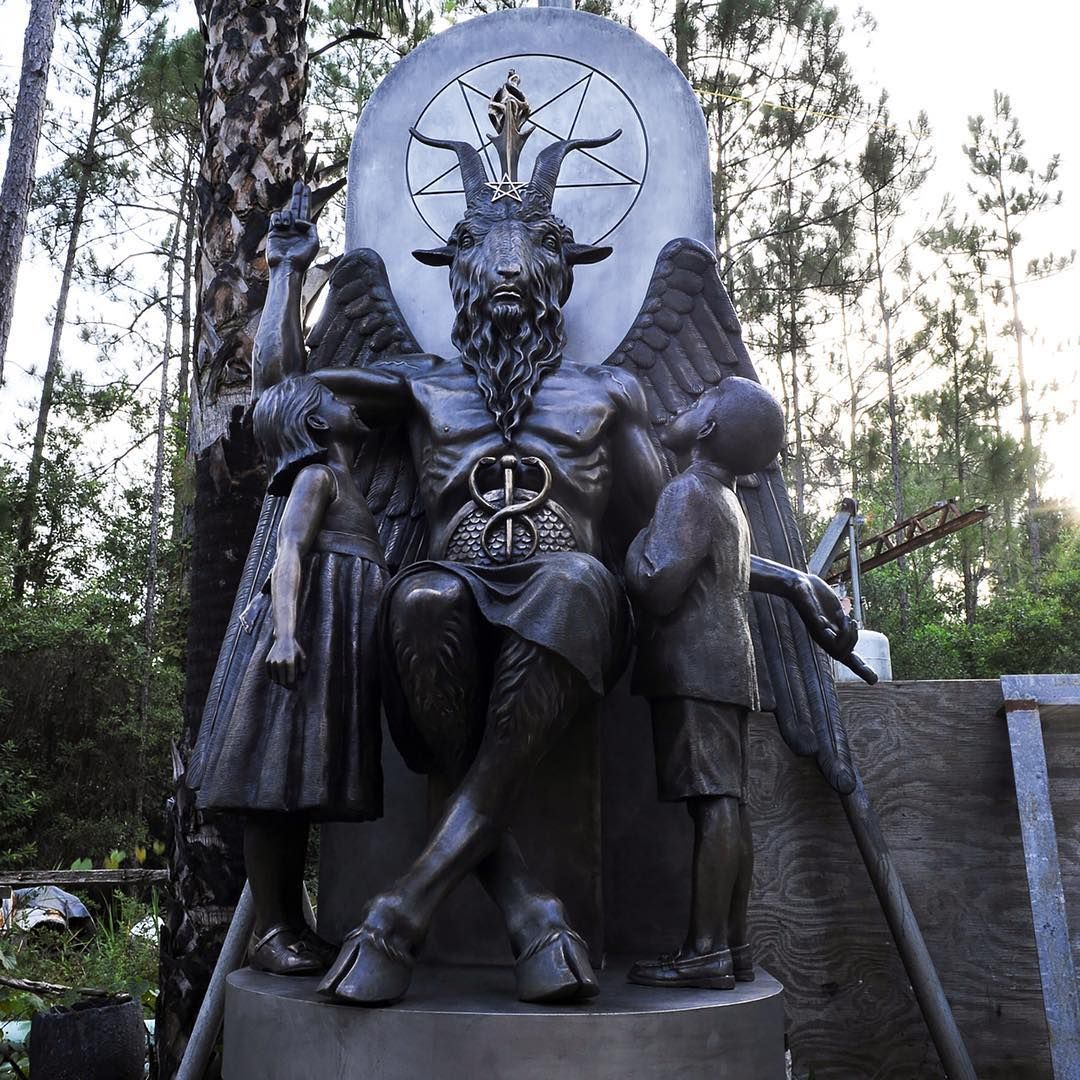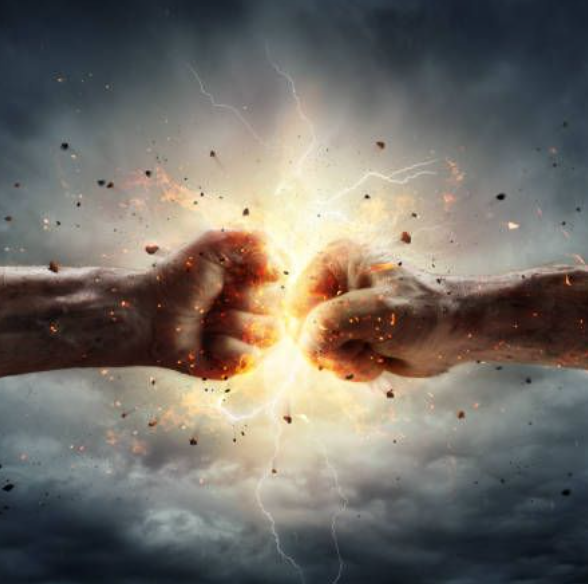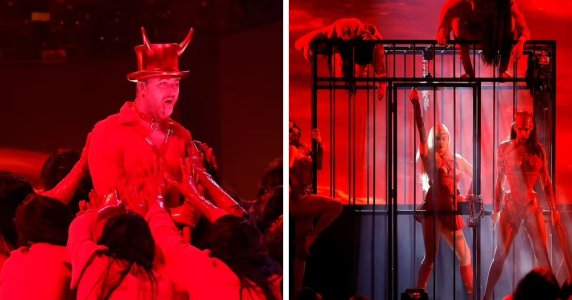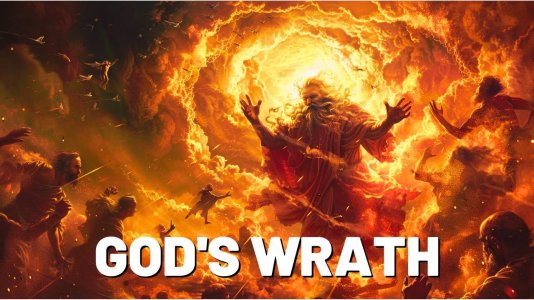- Mar 5, 2024
- 2,078
- 1,087
Leaving Unclean Spirits Behind, To Walk In The Fear Of God, Part 2

On Mt. Sinai, the Israelites experienced the fear of their God as never before. He manifested Himself in Power on the mountain, and it terrified the people so badly that they refused to draw near:
18 Now all the people witnessed the thunderings, the lightning flashes, the sound of the trumpet, and the mountain smoking; and when the people saw it, they trembled and stood afar off. 19 Then they said to Moses, “You speak with us, and we will hear; but let not God speak with us, lest we die.” 20 And Moses said to the people, “Do not fear; for God has come to test you, and that His fear may be before you, so that you may not sin.” 21 So the people stood afar off, but Moses drew near the thick darkness where God was. (Exodus 20:18-21)
This was the setting Peter was using as a backdrop for his current message. They had exited Egypt and were now preparing to sojourn towards the promised land, yet they would need to learn the fear of God, for the enemy would soon be coming to tempt them, and holiness would require that they distance themselves from the unclean spirits of Egypt:
13 Wherefore gird up the loins of your mind, be sober, and hope to the end for the grace that is to be brought unto you at the revelation of Jesus Christ; 14 As obedient children, not fashioning yourselves according to the former lusts in your ignorance. 15 But as He which hath called you is Holy, so be you Holy in all manner of conduct, 16 because it is written, "Be holy, for I am Holy." 17 And if you call on the Father, who without respect of persons judges according to every man's work, then pass the time of your sojourning here in fear. (1 Peter 1:13-17)
"Girding up the loins" meant "Prepare to depart from the evil spiritual influences of your past," setting your hope instead for the grace to be brought at Christ's appearing. But his death on the cross had been necessary to redeem them so there was a fear involved, as Peter hinted at in the next passage:
17 Pass the time of your sojourning here in fear. 18 Forasmuch as ye know that ye were not redeemed from your vain conduct received by tradition from your fathers with corruptible things such as silver and gold, 19 but with the precious blood of Christ, as of a lamb without blemish and without spot, 20 Who truly was foreordained before the foundation of the world, but was manifest in these last times for you, 21 who by Him do believe in God, Who raised Him up from the dead and gave Him glory, that your faith and hope might be in God. (1 Peter 1:17-21)
As talked about in Part 1, people were dying in New Testament times, especially those turning back to sexual practices instigated by unclean spirits, and false versions of Christianity like the Gnosticism Simon the magician introduced. Not coincidently, he got some of the magic and religion he practiced from Egypt.
Worshipping The Golden Calf
As stated in Part 1, the gods the Egyptians worshipped were demons. This is seen not only in the way they were often depicted as half animal/ half human (a trademark signature of the demons of witchcraft and false religion), but in the behaviors these demons encouraged the Egyptians to engage in, including bestiality with animals associated with the worship of certain "gods." Such was the case with Banebdejet, the god worshipped in the city of Mendes. He was depicted as having the head of a ram and the body of a man. A "holy ram" was designated to represent him, kept in a sacred enclosure by the temple priests, and treated like the god himself. This ram was "supped 'with unfailing regularity [upon] the finest wheaten flour . . . seethed in milk, every kind of confection made with honey, and fowl either boiled or baked." It was also bathed regularly in warm water, anointed in sacred oils, fumigated with fine incense and bedecked with jewels, and then brought forth on certain occasions. As one article states:
Foreigners, among them Hellenic and Roman chroniclers, penned salacious stories about the cult of the Living Ram, which may or may not have had a grain of truth to them. Banebdjedet and His ram had the epithet “Fornicating Ram Who Mounts the Beauties.” This not only refers to the fertile aspects of the god, but suggested something perverse about the Ram Lord and His living avatar’s sexual proclivities. In addition to mounting ewes from his harem, the Living Ram, it was rumored, also had sex with human women. Pindar refers to “Mendes, on the overhanging sea-cliff, at the farthest horn of the Nile, where the he-goats fornicate with women.” And when Herodotus visited the city during the mid-5th century BCE, he heard report of a recent public spectacle in which a ram had intercourse with a woman. And based on a mould from the site itself which Donald B. Redford helped to excavate, such coitus a tergo had become a motif in the art of the day. (Shadows of the Sun, Rssing.com)

This is why the Lord specifically forbid it in Leviticus, because the Egyptians were practicing it, and this was the setting behind what happened with the worship of the golden calf.
32 Now when the people saw that Moses delayed coming down from the mountain, the people gathered together to Aaron, and said to him, “Come, make us gods that shall go before us; for as for this Moses, the man who brought us up out of the land of Egypt, we do not know what has become of him.” 2 And Aaron said to them, “Break off the golden earrings which are in the ears of your wives, your sons, and your daughters, and bring them to me.” 4 And he received the gold from their hand, and he fashioned it with an engraving tool, and made a molded calf. Then they said, “This is your god, O Israel, that brought you out of the land of Egypt!” 5 So when Aaron saw it, he built an altar before it. And Aaron made a proclamation and said, “Tomorrow is a feast to the Lord.” 6 Then they rose early on the next day, offered burnt offerings, and brought peace offerings. And the people sat down to eat and drink, and rose up to play. 7 And the Lord said to Moses, “Go, get down! For your people whom you brought out of the land of Egypt have corrupted themselves. 8 They have turned aside quickly out of the way which I commanded them. They have made themselves a molded calf, and worshiped it and sacrificed to it, and said, ‘This is your god, O Israel, that brought you out of the land of Egypt!’... 33 And the Lord said to Moses, “Whoever has sinned against Me, I will blot him out of My book. 34 Now therefore, go, lead the people to the place of which I have spoken to you. Behold, My angel shall go before you. Nevertheless, in the day when I visit for punishment, I will visit punishment upon them for their sin.” 35 So the Lord plagued the people because of what they did with the calf which Aaron made (Exodus 32:1-2, 4-8, 33-35)
The worship of the golden calf was being inspired by yet another demonic spirit, as is obvious from how the calf was worshiped in Egypt in a number of forms, including the half man/ half bull god named Mnevis pictured below, whose worship was commensurate with the time of the Exodus.

Thus, by eating and drinking and then "rising up to play" (an expression containing sexual innuendo), the Israelites were simply gravitating in the same directions the Egyptians had through worship of these "gods." They were receiving help and inspiration from demonic spirits who ultimately wanted the Israelites worshipping them in the place of the True God of Heaven and earth.

On Mt. Sinai, the Israelites experienced the fear of their God as never before. He manifested Himself in Power on the mountain, and it terrified the people so badly that they refused to draw near:
18 Now all the people witnessed the thunderings, the lightning flashes, the sound of the trumpet, and the mountain smoking; and when the people saw it, they trembled and stood afar off. 19 Then they said to Moses, “You speak with us, and we will hear; but let not God speak with us, lest we die.” 20 And Moses said to the people, “Do not fear; for God has come to test you, and that His fear may be before you, so that you may not sin.” 21 So the people stood afar off, but Moses drew near the thick darkness where God was. (Exodus 20:18-21)
This was the setting Peter was using as a backdrop for his current message. They had exited Egypt and were now preparing to sojourn towards the promised land, yet they would need to learn the fear of God, for the enemy would soon be coming to tempt them, and holiness would require that they distance themselves from the unclean spirits of Egypt:
13 Wherefore gird up the loins of your mind, be sober, and hope to the end for the grace that is to be brought unto you at the revelation of Jesus Christ; 14 As obedient children, not fashioning yourselves according to the former lusts in your ignorance. 15 But as He which hath called you is Holy, so be you Holy in all manner of conduct, 16 because it is written, "Be holy, for I am Holy." 17 And if you call on the Father, who without respect of persons judges according to every man's work, then pass the time of your sojourning here in fear. (1 Peter 1:13-17)
"Girding up the loins" meant "Prepare to depart from the evil spiritual influences of your past," setting your hope instead for the grace to be brought at Christ's appearing. But his death on the cross had been necessary to redeem them so there was a fear involved, as Peter hinted at in the next passage:
17 Pass the time of your sojourning here in fear. 18 Forasmuch as ye know that ye were not redeemed from your vain conduct received by tradition from your fathers with corruptible things such as silver and gold, 19 but with the precious blood of Christ, as of a lamb without blemish and without spot, 20 Who truly was foreordained before the foundation of the world, but was manifest in these last times for you, 21 who by Him do believe in God, Who raised Him up from the dead and gave Him glory, that your faith and hope might be in God. (1 Peter 1:17-21)
As talked about in Part 1, people were dying in New Testament times, especially those turning back to sexual practices instigated by unclean spirits, and false versions of Christianity like the Gnosticism Simon the magician introduced. Not coincidently, he got some of the magic and religion he practiced from Egypt.
Worshipping The Golden Calf
As stated in Part 1, the gods the Egyptians worshipped were demons. This is seen not only in the way they were often depicted as half animal/ half human (a trademark signature of the demons of witchcraft and false religion), but in the behaviors these demons encouraged the Egyptians to engage in, including bestiality with animals associated with the worship of certain "gods." Such was the case with Banebdejet, the god worshipped in the city of Mendes. He was depicted as having the head of a ram and the body of a man. A "holy ram" was designated to represent him, kept in a sacred enclosure by the temple priests, and treated like the god himself. This ram was "supped 'with unfailing regularity [upon] the finest wheaten flour . . . seethed in milk, every kind of confection made with honey, and fowl either boiled or baked." It was also bathed regularly in warm water, anointed in sacred oils, fumigated with fine incense and bedecked with jewels, and then brought forth on certain occasions. As one article states:
Foreigners, among them Hellenic and Roman chroniclers, penned salacious stories about the cult of the Living Ram, which may or may not have had a grain of truth to them. Banebdjedet and His ram had the epithet “Fornicating Ram Who Mounts the Beauties.” This not only refers to the fertile aspects of the god, but suggested something perverse about the Ram Lord and His living avatar’s sexual proclivities. In addition to mounting ewes from his harem, the Living Ram, it was rumored, also had sex with human women. Pindar refers to “Mendes, on the overhanging sea-cliff, at the farthest horn of the Nile, where the he-goats fornicate with women.” And when Herodotus visited the city during the mid-5th century BCE, he heard report of a recent public spectacle in which a ram had intercourse with a woman. And based on a mould from the site itself which Donald B. Redford helped to excavate, such coitus a tergo had become a motif in the art of the day. (Shadows of the Sun, Rssing.com)

This is why the Lord specifically forbid it in Leviticus, because the Egyptians were practicing it, and this was the setting behind what happened with the worship of the golden calf.
32 Now when the people saw that Moses delayed coming down from the mountain, the people gathered together to Aaron, and said to him, “Come, make us gods that shall go before us; for as for this Moses, the man who brought us up out of the land of Egypt, we do not know what has become of him.” 2 And Aaron said to them, “Break off the golden earrings which are in the ears of your wives, your sons, and your daughters, and bring them to me.” 4 And he received the gold from their hand, and he fashioned it with an engraving tool, and made a molded calf. Then they said, “This is your god, O Israel, that brought you out of the land of Egypt!” 5 So when Aaron saw it, he built an altar before it. And Aaron made a proclamation and said, “Tomorrow is a feast to the Lord.” 6 Then they rose early on the next day, offered burnt offerings, and brought peace offerings. And the people sat down to eat and drink, and rose up to play. 7 And the Lord said to Moses, “Go, get down! For your people whom you brought out of the land of Egypt have corrupted themselves. 8 They have turned aside quickly out of the way which I commanded them. They have made themselves a molded calf, and worshiped it and sacrificed to it, and said, ‘This is your god, O Israel, that brought you out of the land of Egypt!’... 33 And the Lord said to Moses, “Whoever has sinned against Me, I will blot him out of My book. 34 Now therefore, go, lead the people to the place of which I have spoken to you. Behold, My angel shall go before you. Nevertheless, in the day when I visit for punishment, I will visit punishment upon them for their sin.” 35 So the Lord plagued the people because of what they did with the calf which Aaron made (Exodus 32:1-2, 4-8, 33-35)
The worship of the golden calf was being inspired by yet another demonic spirit, as is obvious from how the calf was worshiped in Egypt in a number of forms, including the half man/ half bull god named Mnevis pictured below, whose worship was commensurate with the time of the Exodus.

Thus, by eating and drinking and then "rising up to play" (an expression containing sexual innuendo), the Israelites were simply gravitating in the same directions the Egyptians had through worship of these "gods." They were receiving help and inspiration from demonic spirits who ultimately wanted the Israelites worshipping them in the place of the True God of Heaven and earth.
Last edited:
